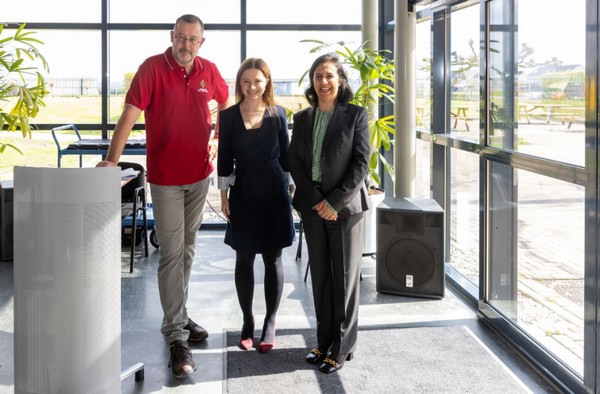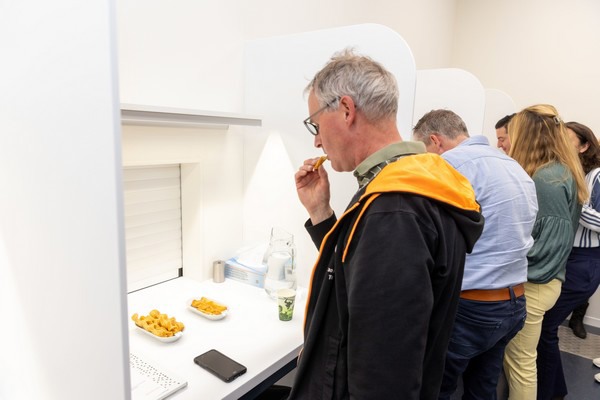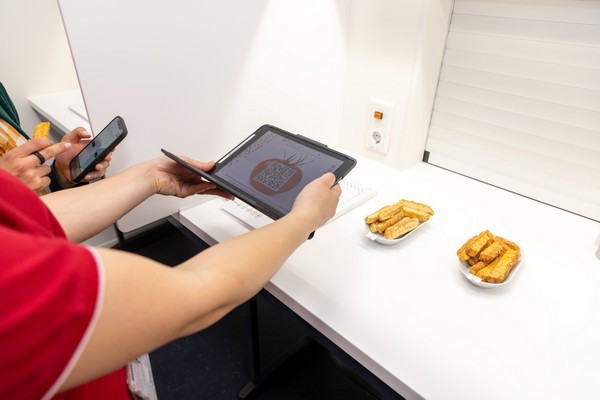Bayer Vegetable Seeds recently opened an in-house Consumer Sensory facility in Bergschenhoek. This facility is part of the vegetable Quality lab and is operated by the same staff.
The vegetable quality lab is equipped with technology that allows precise quantification of, for instance, the firmness, juiciness, and skin toughness, but also the color-, sugar-, carotenoid- and aroma levels of varieties. Results obtained have been used for data-based selections and advancement decisions across the product development pipelines across Europe, the Middle East, and Asia.
The vegetable quality lab enables Bayer to collect objective data on flavor, appearance, health aspects, and nutritional value in great detail and allows head-to-head comparisons of newly developed varieties with previous ones and competitor material.
 Left to right: Kees van Lenning, Lead Analytics Applications Bayer Vegetable Seeds; Svetlana Tokunova, Customer Marketing Manager EMEA Glass/De Ruiter Bayer Vegetable Seeds; Ildem Bozkurt, Head of Vegetable Seeds Commercial Operations in EMEA and APAC, Bayer Vegetable Seeds
Left to right: Kees van Lenning, Lead Analytics Applications Bayer Vegetable Seeds; Svetlana Tokunova, Customer Marketing Manager EMEA Glass/De Ruiter Bayer Vegetable Seeds; Ildem Bozkurt, Head of Vegetable Seeds Commercial Operations in EMEA and APAC, Bayer Vegetable Seeds
To evaluate the preference of consumers and the liking of the products developed, Bayer can now use the in-house sensory facility, where samples can be tested by employees of the station in a fully controlled environment. The outcome of these sensory studies can also be used to optimize the lab assays used for predicted liking and preference.
“For a data-driven company like us, the investment is really a major step forward,” says Svetlana Tokunova, marketing manager for the Benelux.
Infrastructure
The new facility includes a cold room resembling the area where supermarkets receive fresh products. Once unpacked and sorted out, there are a number of instruments, including blenders that turn fresh produce into puree for more complex analysis of sugars and carotenoid levels. But also HPCL-devices that separate molecules and a so-called TA-instrument that measures concentrations of pH, titratable acidity, and Brix in one go.

An intermediate role
The Sensory Lab helps Bayer make better pipeline decisions. When varieties move to the commercial stage, they are tested externally. “The new sensory facility does not impact our relationship with external partners like Delphy and WUR at all,” stresses Kees van Lenning, Lead Analytics Applications. “Our in-house sensory facility” enables experimental work and pre-selection of material sent to external vendors. When we communicate data with our customers, we’ll always use results from independent labs and sensory vendors.”

Employee’s engagement
The opening event attracted over 100 employees. It was the first major event since the outbreak of the Covid-19 pandemic in 2020. “I’m incredibly happy that our employees are very engaged,” adds Ildem Bozkurt, Head of Vegetable Seeds Commercial Operations in EMEA and APAC. “The success of the Sensory Lab also depends on continued engagement. After all, our employees are customers, and the lab needs them to provide feedback.”
For more information: 
Bayer
www.bayer.com
